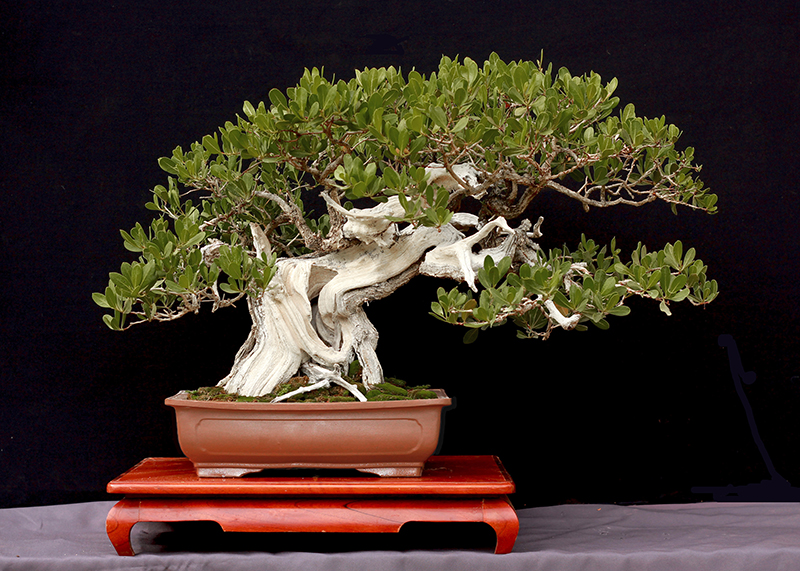
Mangle, Conocarpus erectus
Enrique Castaño Collection
Buttonwood, Conocarpus erectus
designed by Enrique Castaño
Slanting style
45 cm/17.7 inches
Container; Japanese
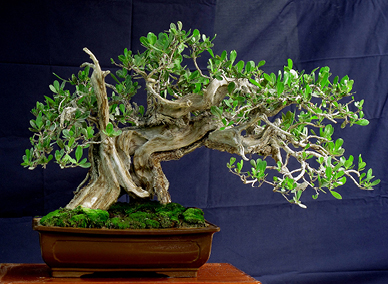
Mangle, photographed in 2009
Conocarpus erectus is well known by its common name, Buttonwood, because the wood from this tree was used to make buttons, as it is not easily degraded by bacteria or fungus. The dead wood is one of the main features for this species. In nature this tree is located near the sea where storms and hurricanes usually hit with all their might. These trees break but then they show another feature good for bonsai, they can bud back on old wood. These are the two main qualities for this species that allow people to create very interesting bonsai. The movement in the trunk lines its due to all the times the trees have been broken down and then recovered into a new direction. Each time this happens the deadwood is sandblasted by the wind and sand exposing the strong grain that shows all the pathways that the tree has endured and over time it can create some very interesting specimens. The story of this particular tree is the same; it was found in the shoreline close to a newly develop road where most of the trees were cut down in 2005. This particular individual was saved and planted in the ground, although at the time there was nothing particular from this tree that called my attention, other than the nice piece of deadwood. This tree was planted into the ground as it had no roots at all and the first step to make a good bonsai is to allow them to have good roots. This is easier if the environment is quite stable, and in the case for this species, very moist. It stayed in the ground for three years before I took notice of it again. I did like the deadwood but it formed the shape of a fallen L with two leaders. I decided to keep the two leaders and show a tropical tree that has more of a flattened umbrella form but at the same time show the deadwood and what the tree has endure. I tried to create the image of a tree that has not only endured the harsh environment but has thrived in it. I showed the tree for the first time in 2009 and since then I have increase the ramification and pulled and pealed a root placing it in the mid-section so the nebari will have some interest and to reduce the visual pull from the sides. The tree can now be appreciated from different sides and has reach maturity at this point. It has taken ten years to bring this tree from an almost dead piece of deadwood to a bonsai. I hope you enjoy it.
View from the back side
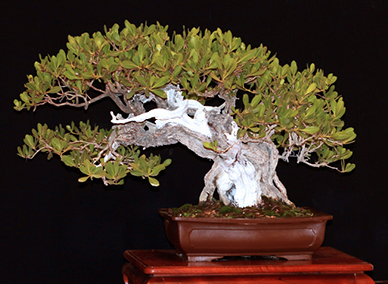
View from the right side
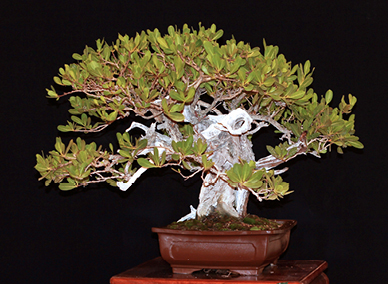
Three-quarter view from the left
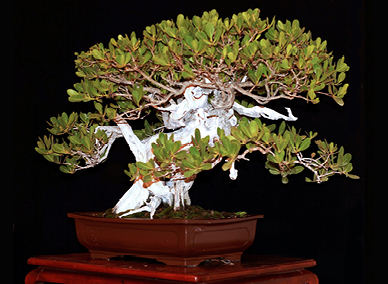
Three-quarter view from the right
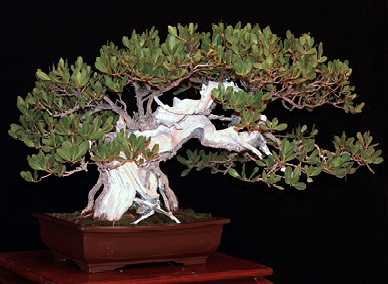
About the collector
Enrique Castaño was born in Mexico City, son of Guillermo Castaño a well know sculptor and bonsai artist as well. Enrique passion for bonsai begun at an early age. As a second generation bonsai artist, he chose to study biology and continue his studies until he had a Ph.D in Biochemistry and Biophysics in Rochester NY. He continued his research at Harvard University and then at the Marie Curie Research Institute in England. He returned to Mexico in 2002 and became head of a gene regulation Laboratory at the plant research Institute in Merida. He founded the Tropical Bonsai Society and has given lectures and demos in Mexico, USA, England, Czech Republic and Lithuania. In 2010 he was the chairman for FELAB and has organized 12 Bonsai conventions. His book Botany for bonsai, the science behind the art, has been well received and is in its second edition. He has obtained several awards including WBFF, Chase Rosade distinction award, John Naka award, Bonsai Olympics gold and silver awards, FEMEXBO award.
